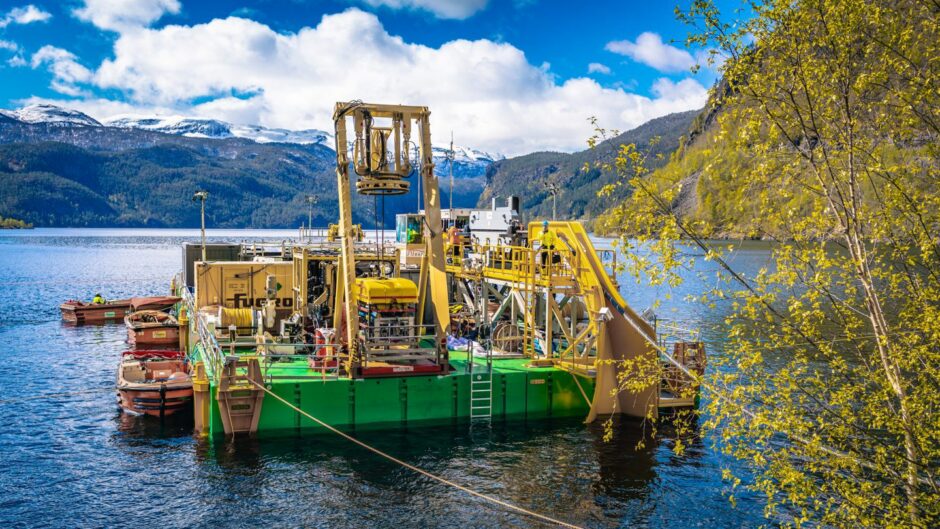 © Supplied by National Grid
© Supplied by National Grid National Grid says its North Sea Link interconnector to Norway has boosted UK energy security and paid for its own carbon costs after just six months in operation.
At 450 miles long the link is the world’s longest subsea electricity cable, and provides a tie-up between the UK and Norwegian grids. It was built as a joint venture between National Grid and Norwegian transmission system operator Statnett.
Completed in October 2021, the cable stretches from Blyth in the UK across the North Sea to Kvilldal in Norway and allows 1.4 gigawatts (GW) of power to be shared in either direction.
This week National Grid said that by March the £1.4 billion link had imported enough green energy to offset the carbon cost of constructing it.
Almost 382,000 tonnes of carbon were saved over the first six months – reportedly enough to cover the entire carbon cost of constructing the project, and the energy used in its daily running over the scheme’s 25-year lifetime.
In total, the interconnector has saved a claimed 800,000 tonnes of carbon emissions over its first year, based on the total volume of power imported and the average carbon intensity of the Norwegian grid versus that of the UK.
During that time, the link allowed some 4.6 TWh of clean electricity to be imported – enough to power the equivalent of 1.5 million UK homes for a year.
It also enabled the export of 1.1 TWh of power to Norway – trading which the grid manager said demonstrates “the vital role that interconnectors play in strengthening energy security” and enabling the benefits of clean energy to be shared more widely across the UK and Europe.
The scheme is National Grid’s fifth interconnector linking the UK with its European neighbours, alongside IFA and IFA2 to France, BritNed to The Netherlands and Nemo Link to Belgium.
National Grid’s sixth interconnector, Viking Link, is currently under construction. Due to be completed by the end of 2023, the project will link Bicker Fen in Lincolnshire to Revsing in Denmark and will be able to import enough clean electricity to power a further 1.4 million UK homes.
National Grid managing director for interconnectors Nicola Medalova called the scheme a “remarkable feat of engineering” and demonstrates how we can work with our neighbours to use every spare electron of green electricity to strengthen our energy supplies.
“Repaying the carbon cost of construction and operation within six months also means we have been able to see the environmental impacts of this project in a matter of weeks – benefits which will last for generations to come,” she added.
“By 2030, we estimate our interconnectors will have saved the UK around 100 million tonnes of CO2 by enabling the fast and flexible sharing of clean, lower cost energy with our European neighbours – equivalent to taking two million cars off the road. These vital energy superhighways will be a critical part of a cleaner, fairer and more affordable energy system, reducing our reliance on fossil-fuelled generation.”
